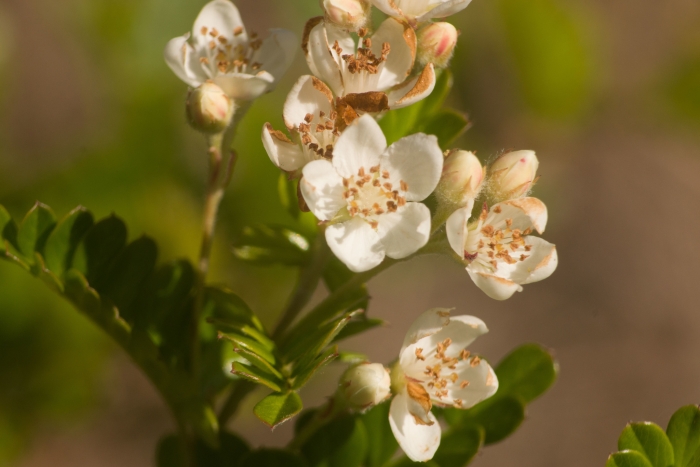Hawaiian Hawthorn
(Osteomeles anthyllidifolia)
Hawaiian Hawthorn (Osteomeles anthyllidifolia)
/
/

Kevin Faccenda
CC BY 4.0
Image By:
Kevin Faccenda
Recorded By:
Copyright:
CC BY 4.0
Copyright Notice:
Photo by: Kevin Faccenda | License Type: CC BY 4.0 | License URL: http://creativecommons.org/licenses/by/4.0/ | Rights Holder: Kevin Faccenda | Publisher: iNaturalist | Date Created: 2022-03-02T09:25:51-08:00 |

























Estimated Native Range
Summary
Osteomeles anthyllidifolia, commonly known as Hawaiian hawthorn, is a perennial shrub native to a range of Pacific islands and regions, including Hawaiʻi, the Cook Islands, Tonga, Pitcairn Island, Rapa Iti, Taiwan, and the Ryukyu Islands of Japan. It exhibits a variable growth habit, typically forming an erect shrub up to 10 feet tall or a spreading shrub. In its natural habitat, Hawaiian hawthorn is found in a variety of ecosystems, including dry to mesic forests, shrublands, coastal areas, and lava plains, at elevations ranging from 7 to 7612 feet. The plant is well-adapted to its native environments, often thriving in volcanic soils and tolerating a range of moisture conditions.
Osteomeles anthyllidifolia is notable for its small, white flowers that bloom in spring and early summer, followed by small, apple-like fruits that are green to yellow when ripe. The fruits are not only a source of dye but are also edible, though not particularly palatable. The dense, strong wood of Hawaiian hawthorn was historically used by Native Hawaiians to craft various tools. In cultivation, this shrub is valued for its resilience and low maintenance, making it suitable for xeriscaping and as an ornamental in rock gardens or naturalized areas. It prefers full sun to partial shade and can tolerate a range of soil types, provided they are well-drained. While generally pest-free, it can be susceptible to scale insects and fungal diseases in poor conditions. Hawaiian hawthorn is not known to be invasive outside its native range, but as with all non-native plantings, care should be taken to monitor its growth.CC BY-SA 4.0
Osteomeles anthyllidifolia is notable for its small, white flowers that bloom in spring and early summer, followed by small, apple-like fruits that are green to yellow when ripe. The fruits are not only a source of dye but are also edible, though not particularly palatable. The dense, strong wood of Hawaiian hawthorn was historically used by Native Hawaiians to craft various tools. In cultivation, this shrub is valued for its resilience and low maintenance, making it suitable for xeriscaping and as an ornamental in rock gardens or naturalized areas. It prefers full sun to partial shade and can tolerate a range of soil types, provided they are well-drained. While generally pest-free, it can be susceptible to scale insects and fungal diseases in poor conditions. Hawaiian hawthorn is not known to be invasive outside its native range, but as with all non-native plantings, care should be taken to monitor its growth.CC BY-SA 4.0
Plant Description
- Plant Type: Shrub
- Height: 3-10 feet
- Width: 10-15 feet
- Growth Rate: Slow
- Flower Color: White
- Flowering Season: Spring, Winter
- Leaf Retention: Evergreen
Growth Requirements
- Sun: Full Sun, Part Shade
- Water: Medium
- Drainage: Fast, Medium, Slow
Common Uses
Bird Garden, Butterfly Garden, Drought Tolerant, Erosion Control, Low Maintenance
Natural Habitat
Native to a variety of ecosystems, including dry to mesic forests, shrublands, coastal areas, and lava plains
Other Names
Common Names: Hawaiian Rose, ’Ulei
Scientific Names: , Osteomeles anthyllidifolia, Mespilus anthyllidifolia, Osteomeles anthyllifolia, Pyrus anthyllidifolia,
GBIF Accepted Name: